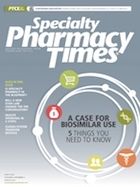Publication
Article
Specialty Pharmacy Times
Will a New Utah Law Change the DIR Conversation?
Author(s):
Although there has been an increasing amount of legislation regarding it, as well, the Utah legislature has taken a very different approach.
Late last year, I released a white paper through Specialty Pharmacy Times® on how pharmacy benefit managers (PBMs) have been expanding the use of direct and indirect remuneration (DIR) fees.
Where did DIR come from? These fees have been around since Part D was created and can be found in the federal rules (42 CFR 423.308). DIR fees were supposed to be a way to offer incentives instead of a way to claw back money from pharmacies.
Originally, DIR fees were more commonly seen via a reconciliation between the claim and the negotiated price. Also, another common DIR fee we see is in a pharmacy’s paying the PBMs to participate in a preferred network, or “pay to play.”
At times, the fee is based on the performance of the pharmacy. This means that the PBM can take money back from the pharmacy and create a situation in which the pharmacy does not receive adequate reimbursement to cover its costs because of arbitrary performance standards that effectively serve as a moving goalpost. Hence, DIR is now seen as a catchall because it has expanded well beyond CMS’ intended use of its definition.
Flat-dollar DIR fees are common in retail and can even be higher than the reimbursed rate from the PBM and result in a loss for the pharmacy. DIR fees are often seen with generic drugs. Many in the industry believe that the creation of maximum allowable cost transparency laws on the state level may have increased the use of flat DIR fees. DIR fees based on a percentage are more common in specialty pharmacy. The higher price of specialty drugs creates a higher DIR fee under a percentage. PBMs can use this fee to charge thousands per claim instead of a smaller, flat fee.
There have been several conversations about this issue, as the expanded use of DIR fees by PBMs have hit the specialty pharmacy industry very hard. Although there has been an increasing amount of legislation regarding it, as well, the Utah legislature has taken a very different approach.
Currently, there are a handful of states that have attempted to address DIR, through a subtle transition to attacking the claw back, one of the most debated parts of the issue with DIR fees. The term claw back refers to PBMs’ taking back money from a claim well after the point of sale, sometimes weeks or months. These charges are most likely a percentage of the total cost of the prescription and many times create a negative reimbursement for the drug dispensed. DIR fees are hard to predict because PBMs do not explain how they calculate performance-based DIR fees.
Both retail and specialty pharmacists focus on this part of DIR fees and will interchange the term claw back with DIR fees. This can be confusing when trying to push policy, as it focuses on the claim only and opens the door for PBMs to con- fuse the issue for policy makers.
Thus, many legislatures have successfully addressed the claw back instead of DIR. This is critical since the PBM industry has challenged whether state legislatures have the proper jurisdictional oversight on a federal issue such as DIR. Hence, states have been more than willing to legislate the claw back issue because of the negative effect it has on consumer protection and in an attempt to safeguard their independent pharmacies by ensuring fair pharmacy competition.
Additionally, the law requires a pharmacy service entity that uses DIR to report certain information to pharmacies or the pharmacy services administration organization. Lastly, as in traditional anti—claw back legislation, this law prohibits a PBM or a coordinator from preventing a pharmacist from disclosing cost information to a patient.
So how will this bill affect future DIR legislation? It remains to be seen. This bill seems to be a little more far-reaching than most anti—claw back legislation, and it will be interesting to watch how this law will be enforced.







